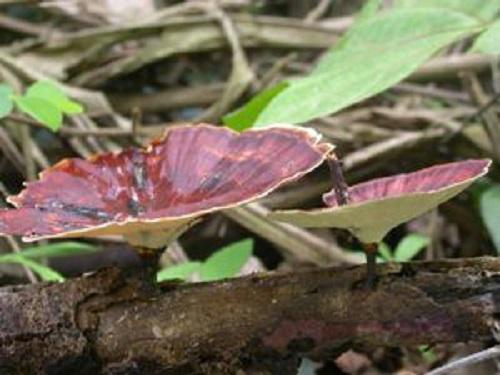Clovis Douanla-Meli
The project is aiming at promoting coarse wood debris (CWD) preservation for wood-inhabiting fungi conservation in the Mbalmayo Forest Reserve, where intensive sylvicultural management implying CWD destruction negatively affects fungal community.

The Mbalmayo Forest Reserve (MFR) counts among the biodiversity hotspots in Cameroon. Despite its status, it is undergoing utmost disturbance and the deforestation is seemingly unstoppable because of the increasing populations in villages located within and around this reserve and the high dependence on forest resources for subsistence.
Countless fungal species are vanishing with this unrestrained deforestation and there is no prospect that the whole mycodiversity will be monitored before a large fraction gets lost. Also, estimation of loosed diversity is unattainable because the lack of knowledge on species figure originally present. There is a need to take and promote measures of conservation of fungal diversity and thereby enhancing strategies of rapid forest ecosystem regeneration. The vast majority of fungi are saprobe, thus their conservation simply demands the preservation of their habitats, here the coarse wood debris (CWD), which are also crucial to natural processes of forest ecosystems regeneration. In the MFR, not only habitat modification and loss are being caused by land use, there is particularly complete destruction by fire of the CWD.
The project is aiming to develop approaches, through CWD preservation, for including fungi in conservation policies for full ecosystem management in the MFR.
We are first looking for conducting workshops programme to carry out capacity building activities for groups of stakeholders (Government, research institutions, farmers, etc.) involved in management of the MFR.
This includes building awareness of:
1) the advantages of natural turnover of CWD biomass for maintaining and stabilizing forest ecosystems,
2) shortcoming of rapid turnover by incineration of CWD biomass,
3) the importance of fungi in forest ecosystems for nutrients cycling, and as Non-Timber Forest Products.
Farmer’s engagement is vital to foster preservation of increasing quantity of CWD after forest clear-cutting. We will use the consensus-building process to get their support and campaigns will be extended to schools in and around the MFR to past the message at the base.
Effects of management intensity level on fungi species richness will be comparatively explored using data from selected plots for evaluating the project.